The 50 States Project is a series of candid conversations with interior designers across the country about how they’ve built their businesses. This week, Portland-based designer Teresa Gonzalez Wilkins tells us how she developed a clientele of athletes on tight timelines, why she requires feedback and design decisions within 48 hours, and how she’s rebuilding her business after pushing pause on design work to have her third child.
Were you drawn to design when you were growing up?
More than anything, I always craved creativity. But in the environment that I grew up in, wanting to do something creative was just not a safe thing to do—you were never led toward that path. It was always like, “Well, that’s not secure, so you need to go this route instead.” So at first, that’s what I did. But at some point I was like, “No,” and went into fashion.
What was that like?
I was going between Miami and Atlanta doing merchandising, and then I started doing interior design on the side. I worked for smaller companies earlier in my career, and [I appreciated] that combination of being able to have that control at work and getting that guaranteed check. I was satisfied with the work.
Then I moved to Oregon to take a job with Nike, which was very intense and time-consuming. I wasn’t able to feed that passion of mine with interiors. At the same time, I got to the point [in my career] where, as you move up through the company, you have less control and less creativity. It was such a big corporation, I started to feel like I wasn’t as hands-on. I didn’t feel like I could make a difference or make change because everything is led down a pipeline. Whatever you were feeling—whether it was trends or colors for the season, or whatever it is—you weren’t really making a big impact [as an individual] and that’s where I started to feel that void.
I also got married and had kids, and the things I wanted to accomplish changed—things I wanted to build for my kids, or how I wanted to be a role model for my daughters. It was a big combination of things that changed in my life where I felt a different need that I had to feed. Eventually, I left Nike in 2019 and officially started my business. I mean, I’d been doing design for so long—the company was structured a long time ago. I’d just never taken the leap to do that solely until 2019.
When you were doing design on the side, how did you organize the business to fit into your life? And what did that early version of your business look like?
I had a lot of athletes as clients—foodball players and basketball players. That was the world I was in at the time. But the thing I feel like that I offered that worked for them was [the promise] that we’d get the entire place together by the time they arrived for the beginning of the season. It was like, “You have a month or two to get my place together before I need to be there. I need everything, but I don’t have anyone to take care of that for me.” And I stepped in to do that.
I’d ask, “Well, what’s your budget?” My fee was 20 percent of that budget, plus markup on whatever we put in the home. And I just made it happen, to the point where the house was done and the was refrigerator stocked with bottled water and their favorite drink. It was a very catered-to-you type of business. At that time, I could only take two clietns at the max because I was just doing so much for each of them—it was impossible to take on more than that and have a regular full-time job. But I worked from home with my corporate job, so my schedule was very flexible. I was able to go to a showroom, then come home and get some work done.
It’s probably why a lot of my business now is people in Miami and Atlanta, as well as Los Angeles and New York. It just happens that way. People refer you and then you just keep going.

When you were working with those clients on such a tight timeline, was it just furnishings, or were you also renovating?
We were not moving walls, but maybe we were redoing kitchen surfaces or things like that—especially in the bathrooms and kitchen. Sometimes we’d do the flooring. It was all things that were easy to turn over when we have a few months to do it and get it done, but we were not, like, tearing walls down. And with those types of projects, I also didn’t have to be on site every day. So in that way, it worked.
How involved were the clients?
What continues on to this day is that I get clients who are like, “Build me the space.” They want to see it, but it’s almost like hiring a stylist. You’re not just going to say, “Here’s a shirt.” It’s like, “Here’s the look.” Give me a budget and I will give you the look—this is the space, and we have shopped the pieces that fit within that budget to give you that look. They want to see the final product before we go ahead and do everything, but they’re not on top of me wanting to go shopping.
Where did your early clients come from once you went all-in on your business?
I worked at Nike for six years and built some really great relationships. A lot of the senior directors and the VPs within the company knew my taste level. When I left, people were like, “Where are you going?” And I’m like, “I’m starting my business.” So people already knew that I was just starting my interior design business.
For the first six months of me leaving, I was like, “Oh, shit, what did I do?” I was still building the company itself. Then, six months in, it’s almost like everyone came knocking on my door at the same time. Business was good, stocks were good, and a lot of the Nike executives I had worked with reached out. Then with Covid hitting and everybody starting to work from home, even more people were like, “I need to fix my house,” or “I need a great home office.” No one was flying, but I was willing to—I was like, “OK, airplanes are empty and hotels are cheap, so let’s do it.” And it grew from there through word of mouth and referrals
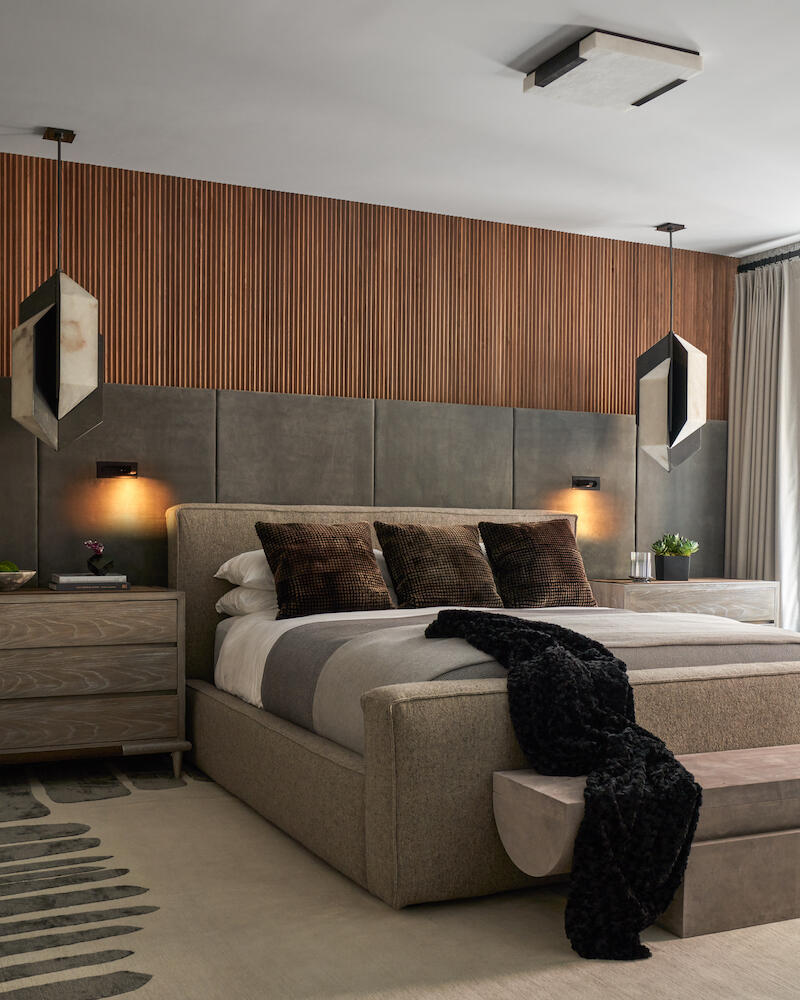

What adjustments did you need to make to the business itself when it became your full-time job instead of a side hustle?
Obviously, there had to be more structure. I had to figure out what I needed to bring in annually in order to really make this work—to pay people, keep afloat and enjoy it at the same time. That was the biggest thing.
Pricing structure is a big part of that—like, what are we going to charge these clients and how are we going to make it consistent? But I also created a work-back schedule [to establish] what to do when we have a new client. We talked to them, what’s next? The contract has to be locked in, the money has to be locked in—I feel like I had to learn that the hard way—and then we have to be very clear about, “Here’s what to expect. Here's your pay schedule. Here’s your design schedule.”
I’ve found it’s important to be very transparent with clients about what to expect and when to expect it. Clients also tend to feel like you’re hiding something when you are not really transparent from the beginning. Yes, they want a beautiful home, but when you’re working with high-end clients, they’ve gotten into that space in their life and are able to spend that much money by [successfully] managing their money. If you don’t help them manage their budget, or show them where their money is going, they don’t feel comfortable.
I feel like sometimes designers are scared to talk about money—they don’t want to tell you, “This is what it’s going to cost you.” Maybe they know a room is going to cost $100,000, but they tell a client it’ll be $75,000, even though realistically they know they’re going to be spending the full $100,000. It’s not fair to people to sugarcoat things, or to make them think they’re going to spend less, then give them a surprise bill or just say, “We tried to get that done, but we couldn’t.” The number-one thing that I do not like going back to people for extra money. It makes me cringe.
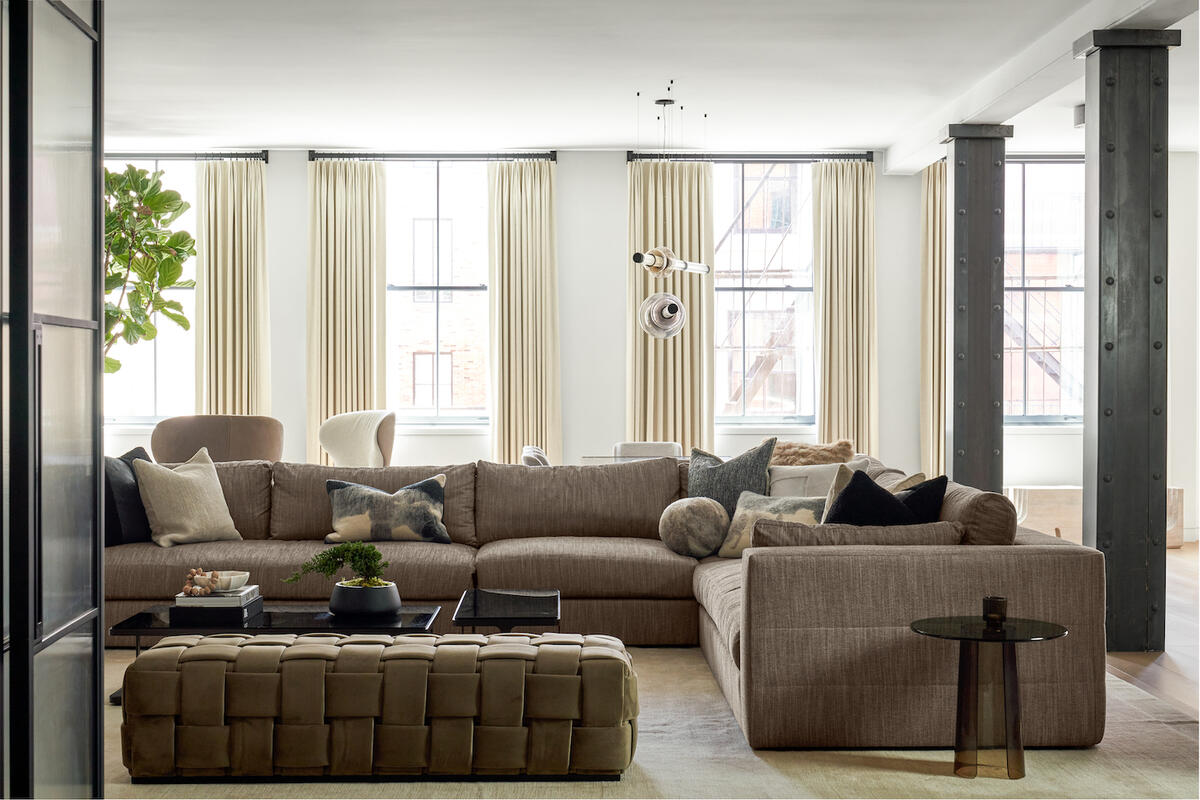
You mentioned that your pricing structure had to evolve. Why didn’t that 20 percent fee plus markup work for you anymore?
It was more the delivery that changed. Saying that we charge 20 percent of the budget makes people feel like the more they spend with you, the more they have to pay you. They feel like they can’t make last-minute changes, or they feel nervous about spending too much money with you. They might want to get started with you, and then pull away and do the rest on their own. My pitch back then was to offer some sort of discount [on furnishings] if I can, but there was always a lot of gray space there.
Now, it’s very clear in my contract: We charge full markup on accessories. For furniture pieces, it kind of depends—if it’s like a retail shop like RH or CB2, we’ll offer you 5 percent off of our discount, which is usually 20 percent. And then anything that is custom or a designer brand that you can’t really shop retail, we will mark up 20 percent and then give you a discount on the remainder of it—that’s the incentive for you to purchase through us.
I also talk about the fees differently. When we look at a space, we know how much the budget is—approximately what needs to go into that space to make it come to life the way that we like to design spaces. So if I said, “Hey, a living room is going to be $100,000,” I know that I’m going to charge you 15 percent of that no matter what. So I say, “My fee is $15,000 for this living room space,” if that’s what you’re bringing me in to do. Now, at least that much is guaranteed, whether they decide to add on to it, or if they decide not to do as much.
Has that been a more comfortable thing for clients to digest and understand?
It has been. Most people are like, “Oh, I get better pricing? That’s cool.” And I’ve already come up with that hard number from the beginning, so I also give them a pay schedule of six installments. When you look at it how much it is when it’s really broken down like that, it doesn’t feel that bad. And it’s not, like, on the first of the month—it’s at each of the different stages of the process.
So at each phase of the design process, the fee is tied to a deliverable, and then to kicking off the next phase?
Yes. It gives the client an incentive to pay [in order] to see the next thing come to life. First we have a retainer and a first deposit when you’re excited to hire a designer. We get started and we create floor plans. Once you’ve approved those, we enter the design process—how everything is going to lay out—and you’re excited to see what that design looks like. You get that check in, and you can see how we’ve brought it to life on paper. You’re excited about that. Now you want to see, How do we get going? We need another check before we start ordering. It’s that excitement of wanting to see that next step—that’s their incentive to shuffle along.
We also give them a limit on turnaround time. When we give you a design, we need your feedback within two days.
That’s fast!
Sure—but if I give you three rounds of wanting to make changes, I feel like most people will [take me up on that]. And if there’s something in a design that bothers you, you’re going to see it immediately. But people push you to the side. For them, that’s not the most important thing going on right now. But it’s like, my time is money, right? I’m not taking on more than a certain number of clients at a time, depending on the size of the job. This is time that could be dedicated to other people, but I’m waiting on your response. So I ask for that level of respect—like, “Hey, once we start designing, I need some answers.” Or if I’m like, “Hey, which table, this one or that one?” I’m going to give you 48 hours to figure it out. We need directions so that we can keep working.

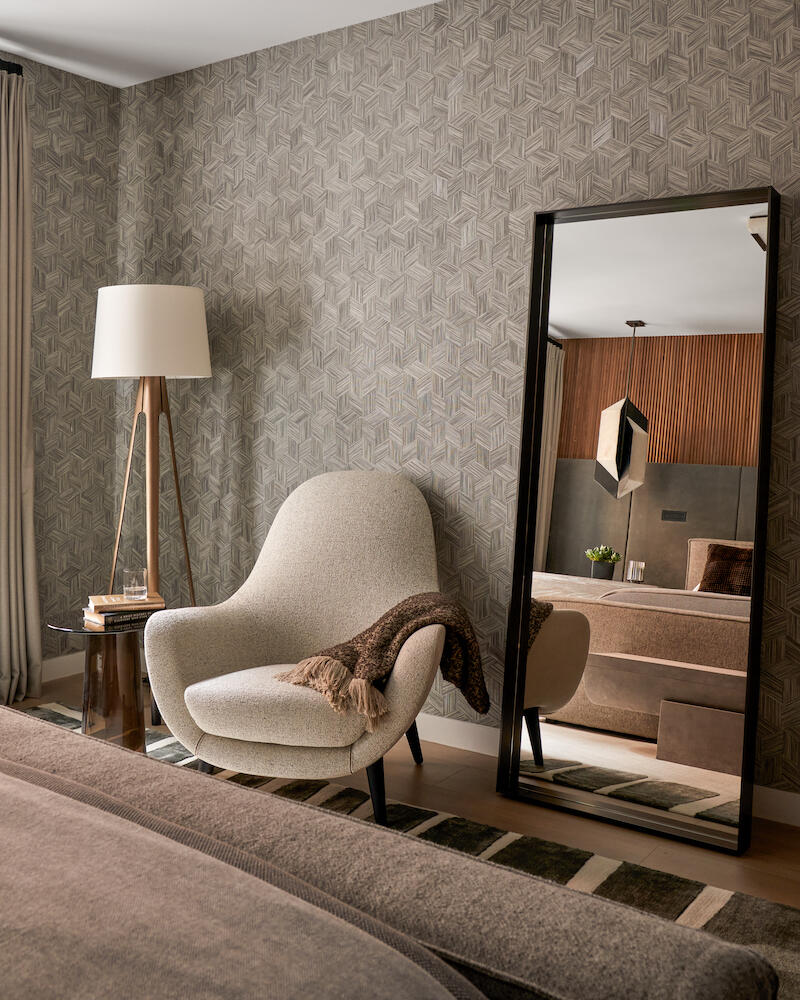
What does a full plate look like for you today?
Well, things in my life have changed a little bit recently. I just had another baby. That’s three young kids, so right now I won’t take on more than three clients at a time. But before this baby came in January, we were taking on up to eight or nine.
What does your team look like?
I had three [employees] working with me before I had the baby. Now I have one. It’s tough when it’s your own business. It’s like, “What does maternity leave look like for me?” If I don’t work, I don’t get paid. So leading up to having the baby, I was trying to wind down [all of my jobs]. I also didn’t have as much energy. You’re physically already doing a whole lot—and don’t forget, I’m traveling because most of my clients are not local. So it was a lot toward the end.
I also didn’t know how long I wanted to take off. I didn’t know when I was coming back, or what the business was going to look like when I came back. When I did come back—it wasn’t as slow of a ramp up as it is when you’re first starting your business, but it was definitely a lot of work to get it rolling all over again. We’re starting to pick up pace now.
Now that you’re rebuilding, what are you building toward and how do you envision the firm growing and evolving?
I work with high-end clients—I like the level of trust those clients have in me. Like if I say, “This is hot”—or not—they trust it. There’s no questioning or second-guessing. But I don’t ever want to exclude potential clients who have that taste level but aren’t spending $500,000 on their home at the moment, or whatever it is. We do have a minimum, because our time is valuable, but I don’t lead with that in my advertising or marketing. I’ve seen some designers with $500,000 minimums, where they are like, “Nope, we won’t work with anybody if it’s less than this.” I don’t want that.
When I visualize my business, I see huge things. And then I look at my kids and I’m like, “Oh, my God, how am I going to make this happen?” You’re pulled in all these different directions. But the passion and the love is there to do amazing things. And as an Afro Latina from New York, I’m really proud that all of my biggest clients were wealthy, successful African Americans. I’ve always thought that was so amazing, and it’s a proud moment for me to see everyone doing so well.
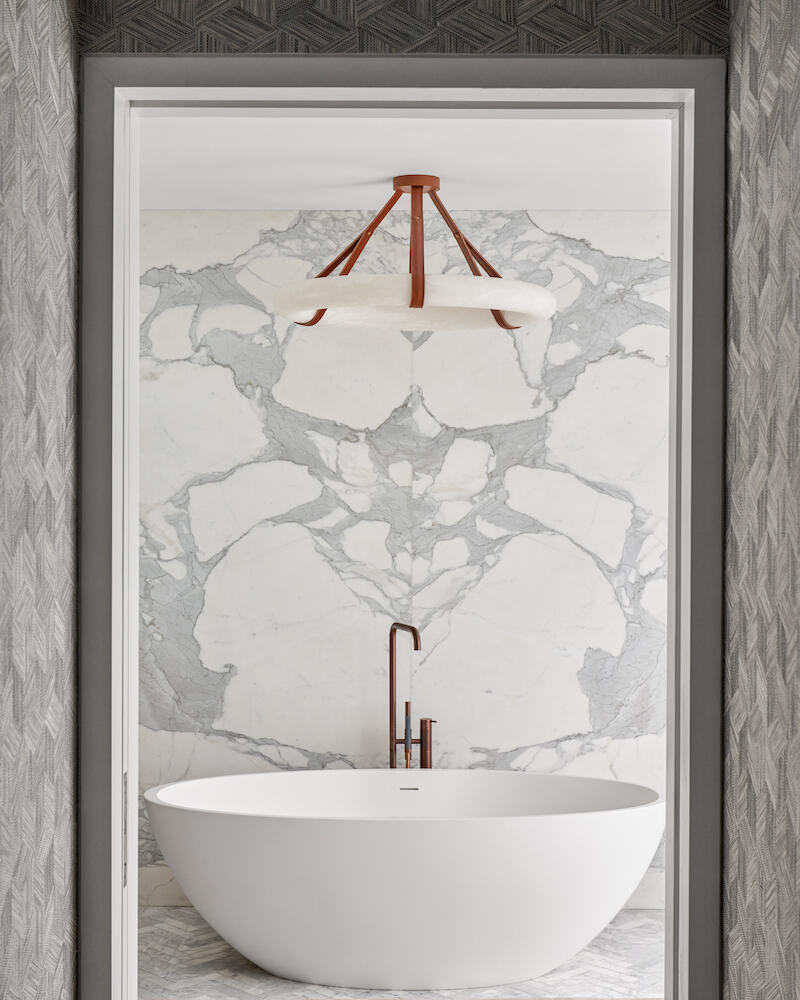
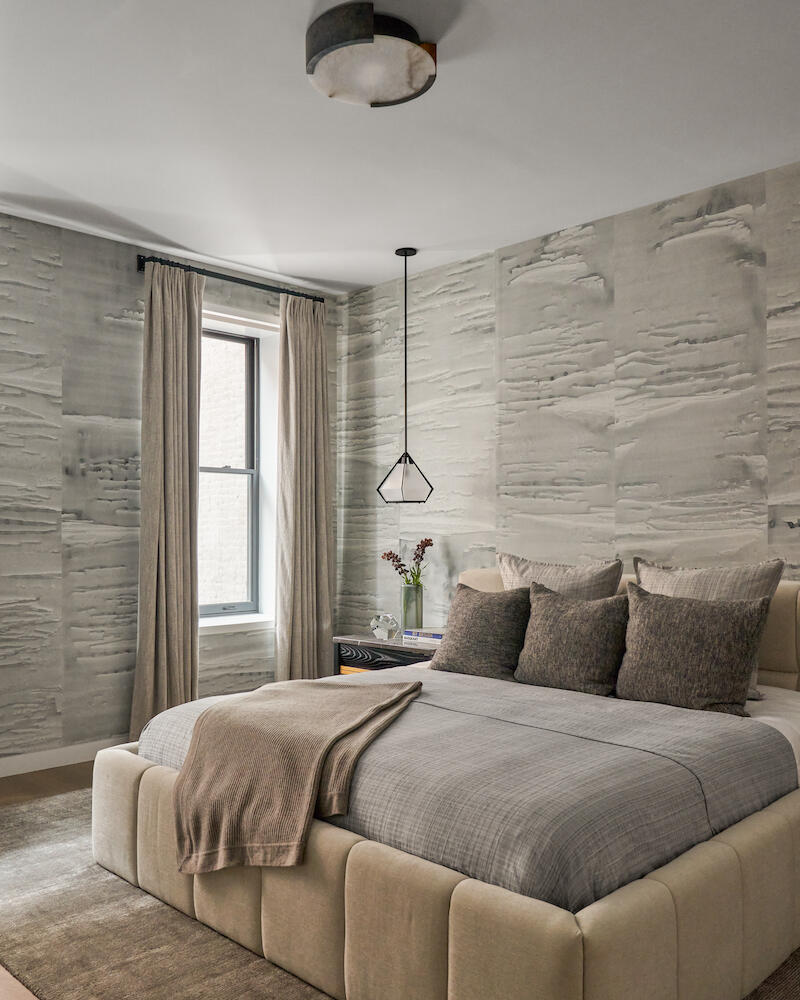
What does it require from you as a designer to source and shop and install in markets that aren’t local to you? How does that complicate the way you work? Or how have you worked around that?
You have showrooms in every corner of the U.S., and they’re all pretty much the same showrooms. Whether I source it from Seattle, Los Angeles, New York, Atlanta or Miami, a lot of them are the same. It’s very rare where I know that there’s only this one specific showroom in New York or Miami for something.
That said, when I happen to be like in a specific city and I know I can sit test something or see something in person, I obviously take that opportunity to do that. High Point Market is a huge help for that, too—we go once a year, and that’s more like confirmation for me about the stuff I was going to order. Maybe I need to find a sofa that’s super cozy and comfortable—that’s something that you can’t do digitally. My biggest challenge is being able to sit on all of the chairs and sofas.
Are you also working locally in Oregon?
Not very much. When I do, though, the only thing that’s really different is maybe the accessibility for the client. I don’t want to make Oregon sound crazy, but there’s not much here in terms of [furnishings resources] so they’re probably going to go to RH and think they found something. I see so much more than they do, so I have to be like, “No, wait, there’s so much more.”
How much of the work is talking clients out of shopping at a big-box store?
Look, if they feel really passionate about it, I’ll do it. But I also tell them, “Hey, before you spend that money, let me show you what else is out there—sometimes for a lot less.” Let’s say you find a sofa that you really want at RH, and it’s $20,000. You can spend half of that—even with me marking it up to retail—and the quality is just as good if not better. But I think sometimes people feel better because it’s a brand name.
It’s a name they know, so it means something to them. They’ve seen the ad, they can tell their friends.
Right. Or they have issues, they feel like they can go back to the store. It’s a mental thing.
How much of the work you do today is still for people who are on that really tight timeline?
A lot of it. A dream client has the time, right? But the majority of my clients don’t. They’re like, “I’m closing tomorrow and I need to move in.”


What’s the secret to getting some of the high-touch details right for those clients?
Understanding the client. I get them, I know their life and what it’s like—the process of the season, where they have to be and when they have to be there. Often they’re so young, so they have their mom helping them out, or an older brother doing things for them, and they’re making decisions as a group. By understanding that life, I’m able to take a load off of whoever is handling the logistics—the home becomes one less thing for them to worry about or do.
I feel like it’s all about customer service. You might shop at Saks or Neiman Marcus, and you know they sell pretty much the same thing. But maybe you go to Saks because you have that one salesperson who just takes care of you when you go there—they style for you, they pull pieces before you get there, they have champagne waiting for you while you try everything on, and then they’ll box everything up and ship it to you with a bow and a sweet note. That’s the person that you always go back to—and what I do, it’s kind of the same thing. You have to understand luxury to be able to offer the right things. Maybe that young athlete doesn’t see the value in art yet. They’re young and focused on having the best house, but there’s a lot of teaching so that they can see how amazing it can be. It's a different approach with a client who already understands quality because they’ve lived their life a little bit more. Or if they have kids, how do we make fun spaces for them?
What does success look like for you?
I just want to be able to do it all, to be honest with you—to juggle my three kids, support my husband and his career here in Oregon, and making it work for me and my business is successful.
Beyond that, I’ve been wanting to get into furniture design. That’s a recent passion of mine. And what I’m trying to create, and my mentality behind my branding, is that I want to create a life and a lifestyle that you want to be a part of. I’ve had clients ask me to pick out gifts for their wives, or to shop for them, and that’s not [what I want my business to be]. But I’ve also had clients as for a referral for a stylist because not only are they redoing their home, they want to redo their closet and have a new look. They’ve got new money, a new stage of their life, and they want to do it all. It’d be cool if I could figure out that whole aspect of it.
To learn more about Teresa Gonzalez Wilkins, visit her website or find her on Instagram.




























